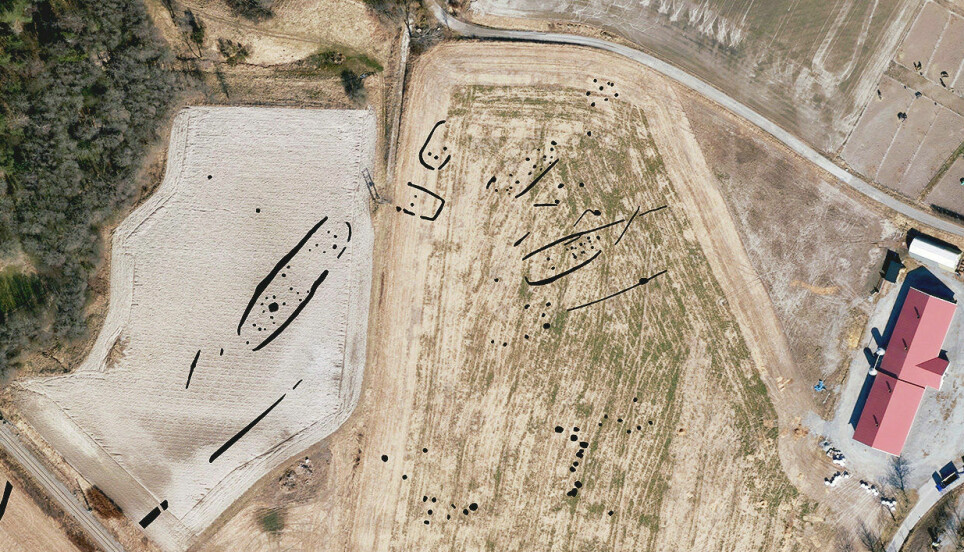
Huge longhouse found near the Gjellestad Viking ship – one of the largest in Scandinavia
The finding confirms what the researchers already believed – that this place was a significant site of power during the Iron and Viking Ages.
As archaeologists have been wrapping up the Gjellestad Viking ship dig, the research project Viking Nativity has just about started up with their examinations of the place where the ship was found.
The researchers will among other things try to answer questions of power, politics and ruling elites in the area.
And just north of the Gjellestad ship, the researchers have already found a number of typical longhosues from the Iron age – one of which is 60 metres long and 15 metres wide – making it one of the largest longhouses in the Nordics, according to a press release from NIKU, the Norwegian Institute for Cultural Heritage Research.
“The fact that we already at the very beginning of the research project can boast of such a grand finding is extremely promising”, says archaeologist Lars Gustavsen from NIKU. He is currently doing his doctoral research on the georadar surveys from Gjellestad, and has been the field supervisor of the geophysical surveys.
Georadar, or ground-penetrating radar, uses radar pulses in order to create images of that which lies under the ground. It gives a sort of x-ray of objects 2-3 metres below the surface.
Four other houses were also found during the examinations. These were between 15-30 metres long, and up to 13 metres wide. Previous surveys have also found a 40 metre long building which archaeologists believe may have been a house for ancient rituals, or a feasting hall.
The text in this video is in Norwegian, but the images give an idea of the georadar examinations as well as the findings.
Several burial mounds
A number of former burial mounds that have been plowed down were also found during this falls georadar surveys.
“This finding isn’t really all that surprising, as there are other similar mounds in the surrounding areas”, Gustavsen says in the press release.
The region of Viken have also done examinations that suggested there would be burial mounds in this spot.
“It’s still important that we now map these out so we can create a fuller image of the landscape around Gjellestad”, Gustavsen says.
“The finding of these longhouses confirms that Gjellestad was a power centre during the Iron Age. In the coming years we will understand more of the connection between the Gjellestad Viking ship, the houses and the emergence of the central places during the Iron Age”, he says.

A place of power
Camilla Cecilie Wenn from the Gjellestad Viking ship dig has previously talked to Sciencenorway.no about how it was previously thought that power during these times was centered west of the Oslo fjord. The Gjellestad-area on the South-Eastern side of the fjord is however now emerging as a significant site of power.
“It’s really exciting to do a dig, one house, one ship. But it’s when you see it all in a bigger context that society starts to appear”, Wenn said to sciencenorway.no.
“When you see the Gjellestad Viking ship in a wider frame, you can start appreciating the site as an important place of power for the Viken region, and not least on a national scale. Only a handful of places in Norway are comparable.”
———
The heading of this article was corrected shortly after publication from stating that the longhouse was "possibly the largest in Scandinavia" to "one of the largest in Scandinavia".
































